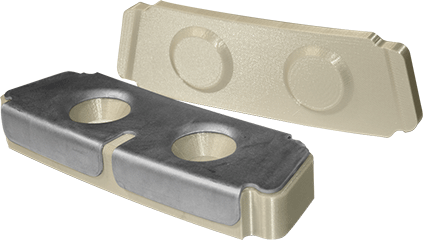Overview
With prints taking as little as under 24 hours, 3D printed metal forming tools can take you from design to production in as little as a week. Using production-grade FDM thermoplastics, hydroforming can produce effective prototypes for development work, repair parts, and one-off custom parts. Often used in the aerospace and automotive industry, hydroforming is primarily used for low-volume production.

Advantage
3D printing with FDM can help companies accelerate their work cycle by providing fast and cost-effective manufacturing applications. The technology reduces the cost of die production by 50-70% and lead times by 60-80%. Using our line of 3D Production Systems from Stratasys, this technology offers greater cost and lead time advantages with more complex and organically shaped parts when compared to traditional CNC machining. These old methods carry a high cost due to raw materials and outsourcing.
When hydroforming, FDM materials can withstand high amounts of pressure. Materials tested over FDM form blocks include aluminum alloys, stainless steels, titanium and nickel-based super alloys. These tools are lighter, more ergonomic, and more durable than traditional tooling, lasting hundreds of cycles showing little to no signs of wear. With shorter lead times and lower costs, manufacturers are able to create custom tooling for their facility in under 24 hours, resulting in an improved design phase and a better final product.